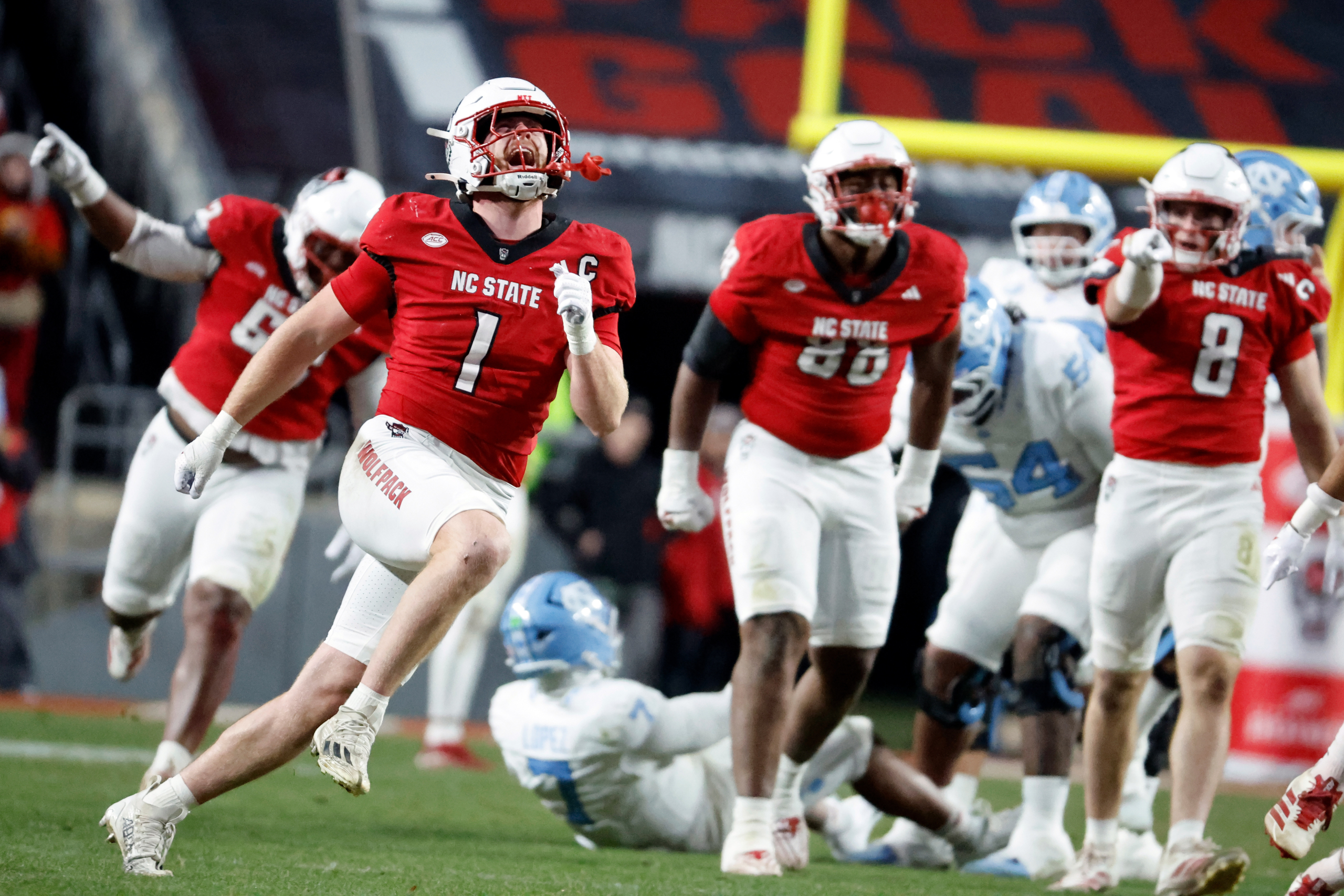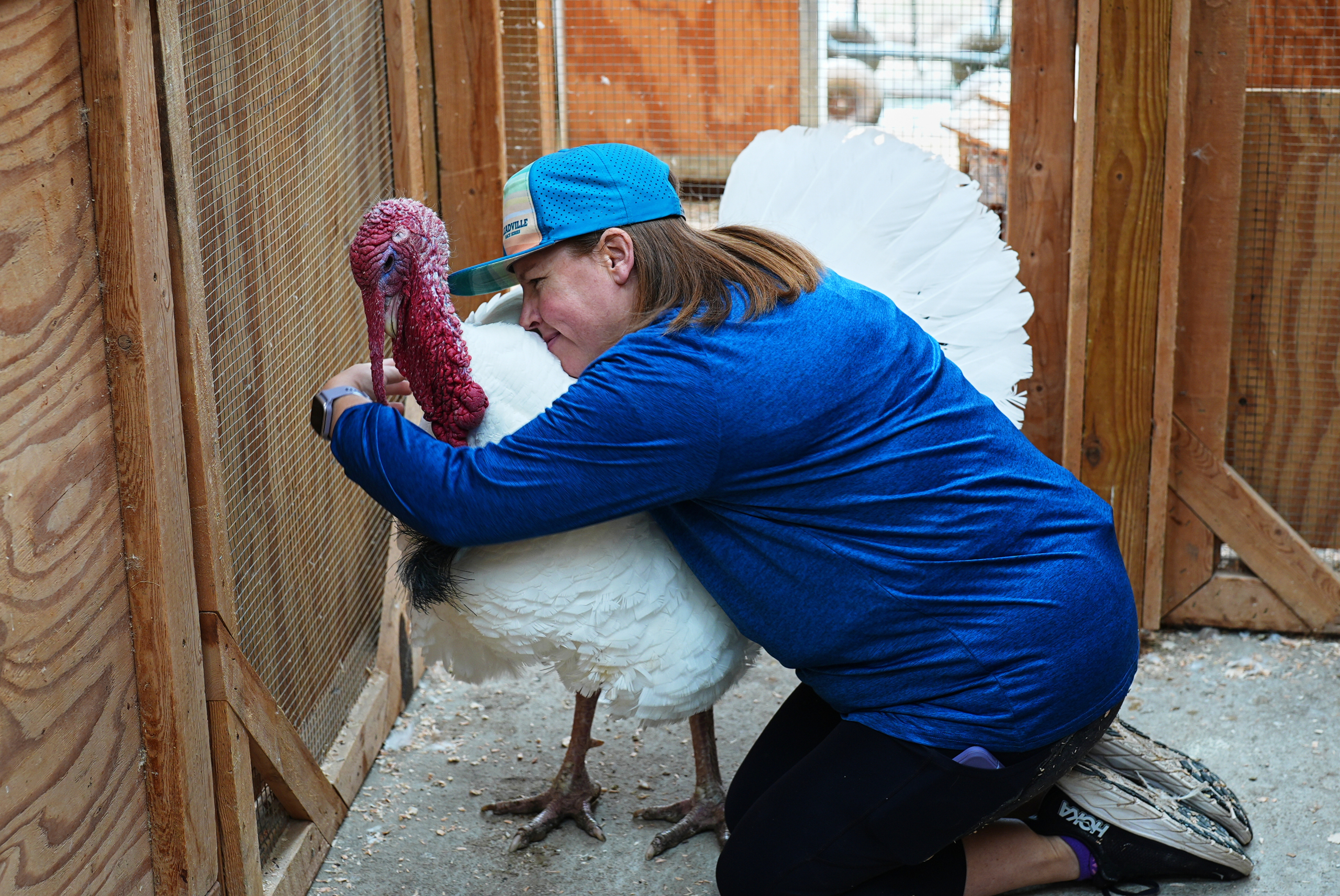Thought of the Day

If you don’t like the road you’re walking, start paving another one.


If you don’t like the road you’re walking, start paving another one.

By JILL LAWLESS Associated Press
LONDON (AP) — British playwright Tom Stoppard, a playful, probing dramatist who won an Academy Award for the screenplay for 1998’s “Shakespeare In Love,” has died. He was 88.
In a statement Saturday, United Agents said the Czech-born Stoppard — often hailed as the greatest British playwright of his generation — died “peacefully” at his home in Dorset in southwest England, surrounded by his family.
“He will be remembered for his works, for their brilliance and humanity, and for his wit, his irreverence, his generosity of spirit and his profound love of the English language,” they said. “It was an honor to work with Tom and to know him.”
Rolling Stones front man Mick Jagger was among those paying tribute, calling Stoppard “a giant of the English theater, both highly intellectual and very funny in all his plays and scripts.
“He had a dazzling wit and loved classical and popular music alike which often featured in his huge body of work,” said Jagger, who produced the 2001 film “Enigma,” with a screenplay by Stoppard. “He was amusing and quietly sardonic. A friend and companion and I will always miss him.”
King Charles III said Stoppard was “a dear friend who wore his genius lightly.”
Theaters in London’s West End will dim their lights for two minutes on Tuesday in tribute.
Over a six-decade career, Stoppard’s brain-teasing plays for theater, radio and screen ranged from Shakespeare and science to philosophy and the historic tragedies of the 20th century.
Five of them won Tony Awards for best play: “Rosencrantz and Guildenstern Are Dead” in 1968; “Travesties” in 1976; “The Real Thing” in 1984; “The Coast of Utopia” in 2007; and “Leopoldstadt” in 2023.
Stoppard biographer Hermione Lee said the secret of his plays was their “mixture of language, knowledge and feeling. … It’s those three things in gear together which make him so remarkable.”
The writer was born Tomás Sträussler in 1937 to a Jewish family in Zlín in what was then Czechoslovakia, now the Czech Republic. His father was a doctor for the Bata shoe company, and when Nazi Germany invaded in 1939 the family fled to Singapore, where Bata had a factory.
In late 1941, as Japanese forces closed in on the city state, Tomas, his brother and their mother fled again, this time to India. His father stayed behind and later died when his ship was attacked as he tried to leave Singapore.
In 1946 his mother married an English officer, Kenneth Stoppard, and the family moved to threadbare postwar Britain. The 8-year-old Tom “put on Englishness like a coat,” he later said, growing up to be a quintessential Englishman who loved cricket and Shakespeare.
He did not go to university but began his career, aged 17, as a journalist on newspapers in Bristol, southwest England, and then as a theater critic for Scene magazine in London.
He wrote plays for radio and television including “A Walk on the Water,” televised in 1963, and made his stage breakthrough with “Rosencrantz and Guildenstern Are Dead,” which reimagined Shakespeare’s “Hamlet” from the viewpoint of two hapless minor characters. A mix of tragedy and absurdist humor, it premiered at the Edinburgh Fringe Festival in 1966 and was staged at Britain’s National Theatre, then run by Laurence Olivier, before moving to Broadway.
A stream of exuberant, innovative plays followed, including meta-whodunnit “The Real Inspector Hound” (first staged in 1968); “Jumpers” (1972), a blend of physical and philosophical gymnastics, and “Travesties” (1974), which set intellectuals including James Joyce and Vladimir Lenin colliding in Zurich during World War I.
Musical drama “Every Good Boy Deserves Favor” (1977) was a collaboration with composer Andre Previn about a Soviet dissident confined to a mental institution — part of Stoppard’s long involvement with groups advocating for human rights groups in the Soviet Union and Eastern Europe.
He often played with time and structure. “The Real Thing” (1982) was a poignant romantic comedy about love and deception that featured plays within a play, while “Arcadia” (1993) moved between the modern era and the early 19th century, where characters at an English country house debated poetry, gardening and chaos theory as fate had its way with them.
“The Invention of Love” (1997) explored classical literature and the mysteries of the human heart through the life of the English poet A.E. Housman.
Stoppard began the 21st century with “The Coast of Utopia” (2002), an epic trilogy about pre-revolutionary Russian intellectuals, and drew on his own background for “Rock ’n’ Roll” (2006), which contrasted the fates of the 1960s counterculture in Britain and in Communist Czechoslovakia.
“The Hard Problem” (2015) explored the mysteries of consciousness through the lenses of science and religion.
Stoppard was a strong champion of free speech who worked with organizations including PEN and Index on Censorship. He claimed not to have strong political views otherwise, writing in 1968: “I burn with no causes. I cannot say that I write with any social objective. One writes because one loves writing, really.”
Some critics found his plays more clever than emotionally engaging. But biographer Lee said his “very funny, witty plays” contained a “sense of underlying grief.”
“People in his plays … history comes at them,” Lee said at a British Library event in 2021. “They turn up, they don’t know why they’re there, they don’t know whether they can get home again.”
That was especially true of his late play “Leopoldstadt,” which drew on his own family’s story for the tale of a Jewish Viennese family over the first half of the 20th century. Stoppard said he began thinking of his personal link to the Holocaust quite late in life, only discovering after his mother’s death in 1996 that many members of his family, including all four grandparents, had died in concentration camps.
“It would be misleading to see me as somebody who blithely and innocently, at the age of 40-something, thought, ‘Oh, my goodness, I had no idea I was a member of a Jewish family,’” he told The New Yorker in 2022. “Of course I knew, but I didn’t know who they were. And I didn’t feel I had to find out in order to live my own life. But that wasn’t really true.”
“Leopoldstadt” premiered in London at the start of 2020 to rave reviews; weeks later all theaters were shut by the COVID-19 pandemic. It eventually opened in Broadway in late 2022, going on to win four Tonys.
Dizzyingly prolific, Stoppard also wrote many radio plays, a novel, television series including “Parade’s End” (2013) and many film screenplays. These included dystopian Terry Gilliam comedy “Brazil” (1985), Steven Spielberg-directed war drama “Empire of the Sun” (1987), Elizabethan romcom “Shakespeare in Love” (1998) — for which he and Marc Norman shared a best adapted screenplay Oscar — code breaking thriller “Enigma” and Russian epic “Anna Karenina” (2012).
He also wrote and directed a 1990 film adaptation of “Rosencrantz and Guildenstern are Dead,” and translated numerous works into English, including plays by dissident Czech writer Václav Havel, who became the country’s first post-Communist president.
Stoppard also had a sideline as a Hollywood script doctor, lending sparkle to the dialogue of movies including “Indiana Jones and the Last Crusade” and the Star Wars film “Revenge of the Sith.”
He was knighted by Queen Elizabeth II in 1997 for his services to literature.
He was married three times: to Jose Ingle, Miriam Stern — better known as the health journalist Dr. Miriam Stoppard — and TV producer Sabrina Guinness. The first two marriages ended in divorce. He is survived by four children, including the actor Ed Stoppard, and several grandchildren.

By AARON BEARD AP Sports Writer
RALEIGH, N.C. (AP) — Short-yardage quarterback Will Wilson ran for four touchdowns while starter C.J. Bailey threw two scoring passes as N.C. State blew out rival North Carolina 42-19 on Saturday night, ending NFL icon Bill Belichick’s first college season with the Tar Heels.
Wilson ran for 54 yards and had a 15-yard dragging-the-pile score in the third quarter for the Wolfpack (7-5, 4-4 Atlantic Coast Conference), who scored touchdowns on all four first-half drives to firmly take control of this one.
Bailey threw TD passes to Wesley Grimes and Justin Joly in that dominant first half on the way to yet another rivalry win for coach Dave Doeren, who has now beaten UNC five straight years.
Gio Lopez threw a touchdown pass for the Tar Heels (4-8, 2-6), though he was knocked from the game early in the third quarter when his left leg bent under him awkwardly on a sack. He was helped to the tunnel putting no weight on his left leg, leading to Max Johnson taking over the offense with UNC down 28-10.
UNC finished with 265 total yards and 11 penalties for 129 yards.
UNC: The Tar Heels opened the year with a buzz that came from hiring Belichick, who led the New England Patriots to six Super Bowl titles. But UNC got off to a horrid start, while its modest gains statistically came against some of the ACC’s worst teams. UNC closed the year by losing all three games to its instate league rivals, first at Wake Forest and last week at Duke.
N.C. State: The Wolfpack became bowl eligible with last week’s home win against Florida State, the 11th time in Doeren’s 13 seasons. Doeren improved to 9-4 all-time against UNC as Wolfpack coach.
UNC: The Tar Heels open next season Aug. 29 against TCU in Dublin, Ireland.
N.C. State: Doeren’s program awaits a bowl destination.


A stone will never be soft and an enemy never a friend.

Spice up your Thanksgiving leftovers by making them into the ultimate sandwich!
1. Start with the base
Spread mayonnaise or aioli on one slice of bread. Spread cranberry sauce on the other.
2. Add the toppings
Layer turkey on top of the mayo side. Add stuffing on top of the turkey—lightly press it down so it stays in place. If using cheese, place it over the stuffing. Add greens if you’d like a fresh element. Then, drizzle or spoon gravy over the top layer before closing the sandwich.
3. Toast the sandwich
Heat a skillet over medium. Lightly butter the outside of both slices of bread. Place the sandwich in the skillet and cook 3–4 minutes per side, pressing gently with a spatula, until the bread is golden and the inside is warmed.
4. Serve and enjoy
Enjoy this delicious way to finish up yesterday’s feast.


A human is as strong as a stone, and as delicate as a flower.

By SARAH RAZA Associated Press
A fleet of planes that UPS grounded after a deadly crash isn’t expected to be back in service during the peak holiday season due to inspections and possible repairs, the company said Wednesday in an internal memo.
The airline expects it will be several months before its McDonnell Douglas MD-11 fleet returns to service as it works to meet Federal Aviation Administration guidelines, said the memo from UPS Airlines president Bill Moore to employees. The process was originally estimated to take weeks but is now expected to take several months.
A fiery MD-11 plane crash on Nov. 4 in Louisville, Kentucky, killed 14 people and injured at least 23 when the left engine detached during takeoff. Cargo carriers grounded their McDonnell Douglas MD-11 fleets shortly after, ahead of a directive from the FAA.
“Regarding the MD-11 fleet, Boeing’s ongoing evaluation shows that inspections and potential repairs will be more extensive than initially expected,” Moore wrote in the memo.
A UPS spokesperson said in a statement that the company will rely on contingency plans to deliver for customers throughout the peak season, and it “will take the time needed to ensure that every aircraft is safe.”
The 109 remaining MD-11 airliners, averaging more than 30 years old, are exclusively used to haul cargo for package delivery companies. MD-11s make up about 9% of the UPS airline fleet and 4% of the FedEx fleet.
Boeing, which took over as the manufacturer of MD-11s since merging with McDonnell Douglas in 1997, said in a statement that it is “working diligently to provide instructions and technical support to operators” so that they can meet the FAA’s requirements.
The FAA said Boeing will develop the procedures for inspections and any corrective actions, pending approval from the FAA.

Happy Thanksgiving! If you need a last minute dish to whip up for a gathering, these cheesy garlic rolls are quick, easy, and delicious!
1. Preheat the oven
Preheat oven according to the roll package instructions (usually around 350°F).
2. Prep the butter
In a small bowl, mix melted butter, garlic, parsley (or Italian seasoning), and salt.
3. Assemble the rolls
Arrange the premade rolls in a baking dish or on a baking sheet. Cut them in half and evenly stuff with the mozzarella. Then, brush the garlic butter mixture over the tops and sides of the rolls and sprinkle with Parmesan.
4. Bake
Bake according to package directions—typically 8–12 minutes, until lightly golden and warmed through.
5. Serve
Serve warm with more butter and enjoy this delicious addition to your holiday table!


If turkeys thought, they’d run away a week before Thanksgiving Day. But turkeys can’t anticipate, and so there’s a turkey on my plate today.

By HALLIE GOLDEN and THOMAS PEIPERT Associated Press
ERIE, Colo. (AP) — “Gus” the turkey has been spending Thanksgiving week much differently than millions of other unlucky gobblers across the U.S.
As he trots in a sprawling animal sanctuary on the Colorado plains, he is stopped every few steps by staff who pet him, hug him or even give him a peck on his red face. Gus has been there since 2023 after being pardoned by the governor.
“What do you think? Do you want to do snuggles today?” Lanette Cook, education and engagement manager at the Luvin Arms Animal Sanctuary in Erie, says to Gus.
Gus is among a growing number of turkeys that are being “adopted” instead of being covered in gravy and eaten at Thanksgiving dinner tables.
An increasing number of farm animal sanctuaries across the country have started promoting this alternative version of Thanksgiving in which families “adopt” turkeys and donate money to their lifelong care. In return, they receive photos, certificates and sometimes even one-on-one visits with the birds.
The goal: Spare a few of the tens of millions of turkeys slaughtered this time of year, many of which are raised in what animal rights advocates say are inhumane conditions in factory farms.
At Luvin Arms, a $25 donation comes with a certificate, photo and either a virtual or in-person visit, explained Kelly Nix, its executive director. Since launching the program in 2022, the sanctuary, located about 25 miles (40 kilometers) north of Denver, has seen the number of sponsorships double every year. And this year they’re on track to reach their goal of $18,000, she said.
Luvin Arms’ website features Gus and a gaggle of turkeys along with their personality traits (Gus is very talkative!) as part of its sponsor-a-turkey program. It encourages the public to donate for the birds for Thanksgiving and maybe even rethink their holiday traditions.
The funds have helped pay for extending the turkeys’ outdoor pasture area, along with feeding and rescuing more turkeys. They’ve helped with veterinary bills, which can sometimes cost thousands of dollars because of the medical complications that arise for turkeys that come from factory farms, which breed them to grow very big in a short period of time, said Nix. In the wild, turkeys tend to live an average of three or four years, according to the National Wild Turkey Federation.
But the sanctuary says the program is about more than just the turkeys or money. There’s also an important educational factor, including the conditions in factory farms and that turkeys are more than just centerpieces.
“Even if it makes you stop and double think what it is you’re about to do,” said Nix. “Or that you’re like, ‘wow this is a life of a sentient being,’ for us that’s a conversation starter.”
Farm Sanctuary, which is located in New York and California, is believed to be the first to launch this type of turkey adoption program, starting in 1986. Gene Baur, its president and co-founder, said initially the public was confused about the program and the concept of rescuing farm animals altogether.
In the nearly four decades since, the sanctuary has rescued thousands of turkeys. And the public has not only caught on to the concept but in some years has donated hundreds of thousands of dollars, Baur said.
“We grow up with certain traditions. But just because something is a tradition doesn’t mean that it needs to remain as a tradition,” said Baur.
Lizzie Parra’s family has been adopting a turkey from the organization since 2021, ever since they visited a sanctuary in Pittsburgh and a turkey followed them around, seemingly desperate to be a part of their tour group.
She, her husband and 11-year-old son are vegan and so always leave turkey off their Thanksgiving table. But Parra said the adoption program gives them a chance to help save turkeys while raising awareness.
“This is just an opportunity for us to tell people that they can, at least for one meal, kind of make the same compassionate choice,” she said.
Barn Sanctuary has had a similar program since 2023 in Chelsea, Michigan. Chase DeBack, its advocacy, education and engagement coordinator, said it’s about shining a more positive light on the birds and their distinct personalities.
He rattles off some of the organization’s residents like they’re close friends: Lewis isn’t much of a people person. Sabrina and Hilda are always interested in what people are bringing into the coop.
“We really wanted to shine a light on the unique personalities that turkeys have and how loving and caring they are for humans and for each other,” said DeBack.
___
Golden reported from Seattle.